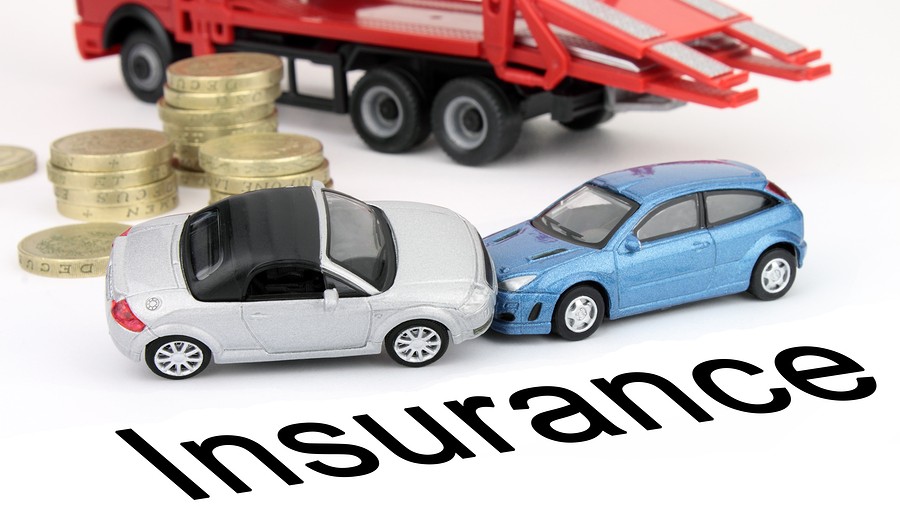Your Complete Guide to Direct Auto Insurance
Shopping for car insurance can feel overwhelming. With so many options, terms, and companies, where do you even start? One path that has become incredibly popular is direct auto insurance. Instead of going through a middleman, you work straight with the insurance company. This approach can simplify the process, save you money, and give you more control over your policy.
This guide will walk you through everything you need to know about direct auto insurance. We’ll explore what it is, how it stacks up against traditional methods, and what to look for when choosing a policy. By the end, you’ll have the confidence to decide if buying direct is the right move for your car insurance needs.
What Exactly Is Direct Auto Insurance?
So, what do we mean when we talk about direct auto insurance? It’s a way of buying and managing your car insurance policy directly from the insurance company, without involving an independent agent or broker. This means you handle everything—from getting a quote to filing a claim—through the insurer’s website, mobile app, or by calling their customer service center.
Think of it like booking a flight. You can use a travel agent who helps you find flights from various airlines, or you can go directly to an airline’s website to book your ticket. Direct auto insurance is the second option. Companies that sell directly are often called “direct writers.” They have their own teams of licensed representatives who work exclusively for them. This streamlined model allows these companies to have a closer relationship with their customers and often pass on savings that would have otherwise gone to agent commissions. This approach has transformed how people shop for coverage, putting more power into the hands of the consumer.
How Is It Different From Using an Insurance Agent?
The main difference between buying direct auto insurance and using an agent comes down to who you work with. When you go through an agent, you’re either dealing with a captive agent or an independent agent. A captive agent works for a single insurance company, like State Farm or Allstate. They can only offer you products from that one provider. An independent agent or broker, on the other hand, represents multiple insurance companies. They can shop around on your behalf to find you a policy from a variety of carriers.
With direct auto insurance, you cut out the agent entirely. You become your own advocate, doing the research and comparison shopping yourself. You interact directly with the insurer’s employees for sales and service. This means you are responsible for understanding your coverage options and making the final decision. While this requires a bit more effort, many drivers find the trade-off of potential savings and direct control to be well worth it. It’s a modern approach that fits well with our digital, do-it-yourself culture.
The Pros and Cons of Going Direct
Choosing the right way to buy car insurance depends on your personal preferences and needs. Going the direct auto insurance route has some significant benefits, but it also comes with a few drawbacks. Understanding both sides can help you make an informed decision that you feel good about. Let’s break down the advantages and disadvantages of this popular model.
Advantages of Direct Auto Insurance
One of the biggest draws of direct auto insurance is the potential for lower costs. Since direct insurers don’t pay commissions to independent agents, they often have lower overhead expenses. These savings can be passed on to you in the form of more competitive premiums. Another major advantage is convenience. You can get quotes, buy a policy, and manage your account from the comfort of your home, at any time of day. This 24/7 access is perfect for people with busy schedules.
You also get a direct line of communication with the insurer. There are no intermediaries, so when you have a question or need to file a claim, you speak directly with a company representative. This can lead to faster service and less confusion. Many direct insurers also invest heavily in user-friendly websites and mobile apps, making it simple to view your policy documents, make payments, and even start a claim with just a few clicks.
Disadvantages of Direct Auto Insurance
On the flip side, the biggest disadvantage of direct auto insurance is the lack of personalized, expert advice from an independent third party. When you buy direct, the responsibility for choosing the right coverages falls entirely on you. An independent agent gets to know your specific situation and can recommend policies from different companies that fit your life. With the direct model, you must do this research yourself.
This can be a challenge if your insurance needs are complex—for example, if you own a business, have a classic car, or have a poor driving record. An agent can help navigate these tricky scenarios. Furthermore, if you prefer face-to-face interaction and building a long-term relationship with a local professional, the direct model might feel impersonal. You won’t have a single, dedicated person to call who knows your history; you’ll likely speak with a different customer service representative each time you call.
Direct vs. Agent-Based Insurance: A Comparison
To make it easier to see the differences, here is a simple table comparing the key aspects of buying direct auto insurance versus working with an agent.
|
Feature |
Direct Auto Insurance |
Agent-Based Insurance (Independent) |
|---|---|---|
|
Primary Contact |
The insurance company’s website, app, or call center |
A local, independent agent |
|
Cost |
Often lower premiums due to no agent commissions |
Can vary; agent may find hidden discounts |
|
Convenience |
High; 24/7 online access |
Varies; depends on agent’s office hours and digital tools |
|
Personalization |
Lower; relies on your own research and choices |
High; agent provides tailored advice and advocacy |
|
ora |
||
|
Choice of Insurers |
Limited to one company |
Multiple companies to compare and choose from |
|
Claims Process |
You work directly with the insurer’s claims department |
Agent can offer guidance and act as an advocate |
Understanding Your Coverage Options
Whether you choose direct auto insurance or go through an agent, the types of coverage available are generally the same. It’s crucial to understand what each one does so you can build a policy that properly protects you. State laws mandate certain minimum coverages, but you will likely want more than the bare minimum for true financial security.
Core Types of Auto Insurance Coverage
Here are the fundamental building blocks of almost every car insurance policy:
- Liability Coverage: This is the foundation of your policy and is required in nearly every state. It pays for injuries and property damage you cause to others in an at-fault accident. It’s broken down into two parts:
-
- Bodily Injury Liability: Covers medical expenses, lost wages, and pain and suffering for people you injure.
- Property Damage Liability: Covers repairs to the other person’s car or property, like a fence or mailbox.
- Collision Coverage: This pays to repair or replace your own car if it’s damaged in a collision with another vehicle or object (like a tree or a pole), regardless of who is at fault. It is typically optional unless you are leasing or financing your car.
- Comprehensive Coverage: This covers damage to your car from non-collision events. Think of it as protection from theft, vandalism, fire, hail, flooding, or hitting an animal. Like collision, it’s usually optional unless required by a lender.
- Uninsured/Underinsured Motorist (UM/UIM) Coverage: This protects you if you’re hit by a driver who has no insurance or not enough insurance to cover your medical bills and car repairs. It’s a very important coverage that is required in some states and highly recommended in all others.
- Personal Injury Protection (PIP) or Medical Payments (MedPay): These coverages help pay for your and your passengers’ medical expenses after an accident, no matter who was at fault. PIP is more comprehensive and is required in “no-fault” states.
How Are Direct Auto Insurance Premiums Calculated?
Insurance companies use a complex algorithm to determine how much you’ll pay for direct auto insurance. They are essentially trying to predict how likely you are to file a claim. The more risk they believe you represent, the higher your premium will be. While every insurer weighs factors differently, some common elements play a major role in your final price.
Key factors include your driving record, with a history of accidents or traffic violations leading to higher rates. Your age and gender are also significant; younger, less experienced drivers typically pay more. Where you live matters, as your ZIP code can influence your rates based on local traffic, crime, and claim frequency. The type of car you drive is also important, as insurers look at its value, repair costs, and safety ratings. Your credit-based insurance score (in most states) and your annual mileage are also factored in. Understanding these variables can help you see where you might have opportunities to lower your costs.
Unlocking Discounts on Your Policy
One of the best things about shopping for direct auto insurance is the wide array of discounts available. Insurers are eager to reward safe drivers and loyal customers. When getting a quote, be sure to ask about all possible discounts you might qualify for, as they can add up to significant savings. Don’t assume they will be applied automatically; you often need to ask for them.
Common Discounts to Look For
Here is a list of some of the most common discounts offered by direct insurers:
- Multi-Policy Discount: Often called “bundling,” this is one of the biggest discounts available. You can save by purchasing your auto insurance along with other policies, like homeowners, renters, or life insurance, from the same company.
- Good Driver Discount: If you have a clean driving record with no accidents or violations for a certain number of years (usually three to five), you can earn a substantial discount.
- Good Student Discount: High school or college students who maintain a “B” average or better are often eligible for a discount, as insurers view them as more responsible.
- Vehicle Safety Features Discount: Having features like anti-lock brakes, airbags, daytime running lights, and anti-theft systems can lower your premium.
- Low Mileage Discount: If you don’t drive very much, you’re less of a risk. Many companies offer a discount for driving fewer than a certain number of miles per year.
- Pay-in-Full Discount: You can often get a small discount by paying your entire six-month or annual premium upfront instead of in monthly installments.
Telematics: The Rise of Usage-Based Insurance
A modern evolution in direct auto insurance is the growth of telematics, or usage-based insurance (UBI). These programs use technology to track your actual driving habits, offering the potential for highly personalized discounts. Instead of relying solely on traditional rating factors like age and location, a UBI program bases your premium on how you actually drive.
Typically, this involves using a small device you plug into your car’s OBD-II port or an app on your smartphone. The technology monitors behaviors like:
- Hard braking and rapid acceleration
- Time of day you drive (late-night driving is riskier)
- Total mileage
- Speeding
Insurers use this data to create a driving score. The safer you drive, the higher your score and the bigger your discount could be at renewal time. Many companies offer a small initial discount just for signing up. This can be a fantastic option for safe, low-mileage drivers, but it may not be ideal for everyone, especially those with irregular schedules or a more aggressive driving style.
How to Compare Quotes for Direct Auto Insurance
Since you’re acting as your own agent, effectively comparing quotes is the most important step in finding the best direct auto insurance policy. Simply looking for the cheapest price isn’t enough; you need to make sure you’re comparing apples to apples. A low price is no good if the policy doesn’t give you the protection you need.
Start by deciding on the coverage types and limits you want. For example, don’t just get a quote for state-minimum liability; decide on a comfortable limit, like 100/300/100 ($100,000 for bodily injury per person, $300,000 per accident, and $100,000 for property damage). Then, use these exact same limits and deductibles when getting quotes from at least three to five different direct insurers. Pay close attention to the details. A site like https://versaillesblog.com/ often has great resources and checklists that can help you organize your search and ensure you don’t miss anything important. Finally, look beyond price. Research each company’s customer service ratings and claims satisfaction scores to ensure they’ll be there for you when you need them most.
Navigating the Claims Process Directly
Filing a claim is the moment of truth for any insurance policy. With direct auto insurance, the process is typically straightforward and heavily reliant on technology. Most direct writers have robust mobile apps that allow you to start a claim right from the scene of an accident. You can often upload photos of the damage, get contact information for tow trucks, and find approved repair shops all from your phone.
After you file the initial report, a claims adjuster from the insurance company will be assigned to your case. This person will be your main point of contact. They will investigate the accident, review the evidence, assess the damages, and determine the settlement amount based on your policy’s coverages. Because you’re working directly with the insurer, there is no agent to act as an intermediary. This can make the process faster, but it also means you need to be proactive in communicating with your adjuster and keeping records of all conversations and documents related to your claim.
Is Direct Auto Insurance Right for High-Risk Drivers?
Drivers who are considered “high-risk” can have a difficult time finding affordable coverage. A high-risk driver is someone with a history of at-fault accidents, a DUI/DWI conviction, multiple speeding tickets, or a lapse in coverage. While many standard direct insurers may decline to offer a policy or quote extremely high premiums, there are companies that specialize in direct auto insurance for the high-risk market.
These “non-standard” insurers are willing to take on the additional risk, but their premiums will be significantly higher. For these drivers, buying direct can still be a viable option. It allows them to quickly get the coverage they need to be legally on the road. The process is the same: you get quotes online or over the phone and manage your policy yourself. If you’re in this category, it’s more important than ever to shop around, as rates can vary dramatically between companies that specialize in high-risk policies. You may also be required to file an SR-22 form with your state, which your direct insurer can handle for you.
Tips for First-Time Car Insurance Buyers
Buying your first car insurance policy can be intimidating. The world of direct auto insurance is a great place for first-timers to start because the online tools and resources are often designed to be user-friendly and educational. If you’re new to this, here are a few tips to make the process smoother.
First, take the time to learn the basics of coverage that we discussed earlier. Don’t just buy the legal minimum required by your state, as it often provides very little protection. A minor accident could easily exceed those limits, leaving you personally responsible for the rest. Second, be honest on your application. Misrepresenting information about your driving history or who drives the car can lead to a claim being denied or your policy being canceled. Finally, don’t be afraid to use the insurer’s customer service line. Even with a direct provider, licensed representatives are available by phone to answer your questions and walk you through the options, ensuring you build a policy that truly fits your needs.
Key Takeaways
- Direct auto insurance means you buy and manage your policy directly with the insurer, without an agent.
- The main benefits are often lower costs, 24/7 convenience, and direct communication.
- The main drawbacks are the lack of personalized advice and the need for you to do your own research.
- Always compare quotes with identical coverage limits and deductibles to ensure an accurate comparison.
- Look for discounts! Bundling policies, being a good driver, and having safety features can lead to big savings.
- Usage-based insurance (telematics) can offer further discounts for safe driving habits.
Conclusion
Choosing direct auto insurance is an excellent option for savvy consumers who are comfortable managing their own financial products and prefer a digital-first experience. It offers a powerful combination of convenience, control, and potential cost savings. By putting in a little time to research your coverage needs and compare quotes from several providers, you can find a high-quality policy that protects you on the road without breaking the bank.
The key is to be a proactive and informed shopper. Understand what you’re buying, ask questions when you’re unsure, and regularly review your policy to make sure it still meets your needs. Whether you’re a first-time buyer, a high-risk driver, or just looking for a better deal, the direct insurance market has something to offer everyone.
Frequently Asked Questions (FAQ)
1. Can I get the same coverage with direct insurance as with an agent?
Yes, direct auto insurance companies offer the same standard types of coverage, including liability, collision, comprehensive, and uninsured motorist protection. You can build a policy with the exact same limits and deductibles you would get through an agent.
2. Is direct auto insurance always cheaper?
Not always, but it often is. Direct insurers save money by not paying agent commissions, and they can pass those savings to customers. However, an independent agent might have access to a niche company or a specific discount that makes their option cheaper. It’s always best to compare quotes.
3- What happens if I have a complex insurance need?
If your situation is complicated (e.g., you own a business with company cars or have a classic vehicle), you might benefit more from the expert advice of an independent agent. However, many direct insurers have specialized departments that can handle more complex situations if you call them.
4. How do I switch to a direct auto insurance provider?
Switching is easy. First, purchase your new policy from the direct insurer and set its start date. Then, contact your old insurance company to cancel your previous policy, making sure the cancellation date is the same as or after the new policy’s start date to avoid a lapse in coverage.
5. Is the claims process more difficult without an agent?
It’s not necessarily more difficult, just different. You will communicate directly with the claims adjuster. While you won’t have an agent to advocate for you, direct insurers have streamlined their claims processes with online tools and mobile apps to make it as simple as possible.
6. Do I need to be tech-savvy to use direct auto insurance?
While being comfortable with websites and apps is helpful, it’s not a requirement. All direct auto insurance companies also operate call centers with licensed representatives who can help you get a quote, purchase a policy, and manage your account over the phone.
7. Can I bundle my home and auto insurance with a direct provider?
Absolutely! Most major direct auto insurance providers also offer homeowners, renters, and other types of insurance. Bundling these policies is one of the most effective ways to get a significant discount on your premiums.
8. What if I get a quote I like but still have questions?
Even with a direct auto insurance company, you can always talk to a person. Their websites will list a customer service number. Don’t hesitate to call and speak with one of their licensed agents to get clarification before you buy.
Meta Title: A Complete Guide to Direct Auto Insurance | What You Need to Know
Meta Description: Learn everything about direct auto insurance, from how it works and its pros and cons to comparing quotes and finding discounts. Is it right for you?














Post Comment